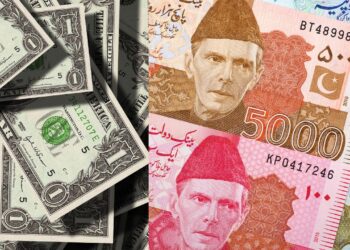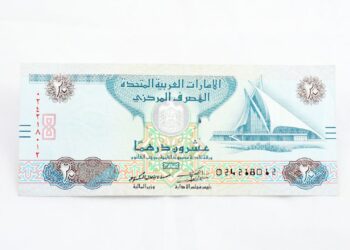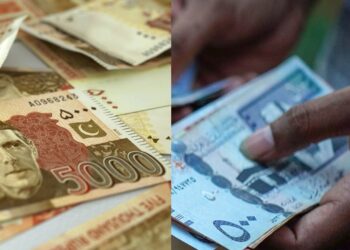After the recent agreement at the staff level between Pakistan and the International Monetary Fund (IMF), the Pakistan Stock Exchange (PSX) experienced a notable surge, with the benchmark KSE-100 index surpassing 57,000 points. Concurrently, the Pakistani rupee exhibited recovery against the dollar in intraday trading within the interbank market.

Just a day prior, Pakistan had successfully concluded a staff-level agreement with the IMF pertaining to the initial review of a $3 billion bailout. Following approval from the Fund’s Executive Board, Pakistan is poised to gain access to approximately $700 million, elevating the total disbursements under the program to nearly $1.9 billion, as stated in an announcement by the IMF on Wednesday.
During today’s intraday trading, the rupee reversed its 17-session losing streak, registering a gain of 2.14 against the dollar. It is currently being traded at Rs286 against the greenback in the interbank market, a positive shift from the previous closing rate of Rs288.14 on Wednesday, as reported by Geo News.
At around 10:20 am, the PSX witnessed a significant milestone as the benchmark KSE-100 Index crossed the 57,000-point threshold. A former adviser to the finance ministry, speaking to the media outlet, attributed this buoyancy in the PSX to the IMF staff-level agreement. He emphasized that the $700 million infusion from the global lender would facilitate Pakistan in securing much-needed external financing.
Dr. Najeeb, an economist, expressed optimism about the IMF’s approval, citing the government’s efforts in fiscal consolidation and addressing energy price changes, which impact circular debt. He anticipated that the approval would bolster external financing, providing relief to the forex market and contributing to an increase in the supply side, including debt instruments and financing from multilaterals, both in terms of program and project loans.
Dr. Najeeb further noted that loans from bilateral sources, friendly countries, and commercial funds would likely follow suit after the IMF agreement. When discussing the rupee’s appreciation, he emphasized that its parity with foreign currencies is influenced by the country’s productivity and expected positive outcomes from the recent financial developments.
















